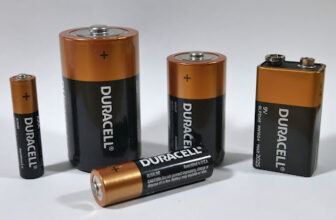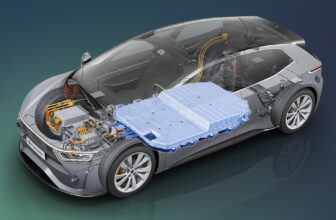
Cancer is a complex and devastating disease that has touched the lives of millions worldwide. At its core, cancer is a genetic disease caused by changes in the DNA of cells, leading them to grow and divide uncontrollably. Understanding how cancer forms requires delving into the intricate workings of our cells, the factors that trigger genetic mutations, and the signs and symptoms that may indicate its presence.
This article unpacks the process of cancer formation while keeping perplexity and burstiness in mind, ensuring a mix of detailed, complex explanations alongside concise, impactful insights.
What Is Cancer?
Cancer is not a single disease but a group of related conditions characterized by abnormal cell growth. Under normal circumstances, cells grow, divide, and die in a controlled manner. However, when DNA damage disrupts this balance, cells may begin to grow uncontrollably, forming a mass known as a tumor.
The Genetic Basis of Cancer
At the heart of cancer lies damaged DNA. DNA carries the instructions for cellular functions, including growth, division, and repair. When errors occur in specific DNA regions, called genes, they can lead to cancer.
How Gene Mutations Cause Cancer
Gene mutations are the primary drivers of cancer. These mutations may:
- Turn Normal Genes into Oncogenes: Oncogenes are mutated forms of genes that promote excessive cell division.
- Inactivate Tumor Suppressor Genes: These genes regulate cell division and repair damaged DNA. When disabled, they allow cells to grow unchecked.
- Cause DNA Repair Genes to Malfunction: When repair mechanisms fail, additional mutations accumulate, increasing cancer risk.
How Do Gene Mutations Occur?
Gene mutations can arise from various factors, including:
Inherited Mutations
Some people inherit mutations from their parents, increasing their predisposition to certain cancers. For example, BRCA1 and BRCA2 gene mutations are linked to breast and ovarian cancer.
Acquired Mutations
Most cancers result from acquired mutations, which develop over a person’s lifetime due to environmental exposure or lifestyle factors, including:
- Smoking: A major cause of lung cancer, smoking introduces carcinogens that directly damage DNA.
- Ultraviolet (UV) Radiation: Prolonged sun exposure can cause skin cancer by damaging the DNA in skin cells.
- Obesity: Excess body weight is linked to chronic inflammation, a factor that can trigger DNA mutations.
- Viruses: Certain viruses, such as HPV, are associated with cancers like cervical cancer.
The Role of Age
As we age, our cells accumulate DNA damage. Combined with a natural decline in repair mechanisms, this increases cancer risk.
The Process of Cancer Formation
Cancer develops in stages, transitioning from a single mutated cell to a potentially life-threatening disease.
Stage 1: Initiation
The process begins when a genetic mutation occurs in a single cell. This mutation may be caused by carcinogens, radiation, or errors during cell division.
Stage 2: Promotion
Mutated cells begin to proliferate. Factors like chronic inflammation or hormonal imbalances can accelerate this growth.
Stage 3: Progression
As mutated cells continue to grow, they form tumors. Tumors may remain localized or become malignant, spreading to other parts of the body.
Stage 4: Metastasis
In the final stage, cancer cells invade nearby tissues or travel through the bloodstream or lymphatic system, establishing secondary tumors in other organs.
Signs and Symptoms of Cancer
Early detection of cancer can significantly improve outcomes. While symptoms vary based on cancer type and location, some general warning signs include:
Common Signs to Watch For
- Unexplained Weight Loss: Sudden weight loss without dietary changes may indicate an underlying issue.
- Persistent Fatigue: Fatigue that doesn’t improve with rest could be a sign of systemic illness.
- Fever: Chronic fever may signal infection or cancer affecting the immune system.
- Pain: Persistent or unexplained pain should never be ignored.
- Skin Changes: Changes in skin color, texture, or the appearance of moles may be signs of skin cancer.
The “CAUTION” Mnemonic
The CAUTION mnemonic outlines seven key warning signs of cancer:
- Change in bowel or bladder habits.
- A sore that does not heal.
- Unusual bleeding or discharge.
- Thickening or lump in the breast or elsewhere.
- Indigestion or difficulty swallowing.
- Obvious change in a wart or mole.
- Nagging cough or hoarseness.
Types of Cancer and Their Causes
Different cancers have unique causes and risk factors.
Lung and Bronchial Cancer
- Cause: Smoking is the leading cause, followed by exposure to radon gas and air pollution.
- Fact: Lung cancer has a five-year survival rate of just 22%, despite advancements in treatment.
Skin Cancer
- Cause: Prolonged UV radiation exposure.
- Prevention Tip: Regular use of sunscreen can significantly reduce risk.
Breast Cancer
- Cause: Genetic mutations, obesity, and hormonal factors.
- Note: Early detection through mammograms improves survival rates.
How to Reduce Cancer Risk
While not all cancers are preventable, adopting a healthy lifestyle can lower your risk.
Avoid Known Carcinogens
- Quit smoking and avoid secondhand smoke.
- Limit alcohol consumption.
Protect Your Skin
- Use sunscreen with at least SPF 30.
- Avoid tanning beds.
Maintain a Healthy Weight
- Regular exercise and a balanced diet can reduce inflammation and hormone imbalances linked to cancer.
Get Vaccinated
Vaccines like the HPV vaccine can prevent virus-related cancers.
Advances in Cancer Treatment
Medical science has made significant strides in cancer treatment, improving survival rates and quality of life.
Targeted Therapy
This treatment targets specific genetic mutations in cancer cells, minimizing damage to healthy tissue.
Immunotherapy
Immunotherapy boosts the immune system’s ability to identify and destroy cancer cells.
Early Detection Tools
Screening methods, such as low-dose CT scans for lung cancer, enable early detection and intervention.
Conclusion
Cancer forms due to genetic mutations that disrupt the normal functioning of cells, causing them to grow uncontrollably. While the process is complex and influenced by various factors like age, lifestyle, and environmental exposures, understanding the mechanisms of cancer provides valuable insights for prevention and treatment.
Early detection, lifestyle changes, and advancements in medical science are crucial in the fight against cancer. If you notice any unusual symptoms or have a family history of cancer, consult a healthcare professional promptly. Remember, knowledge and vigilance can save lives.







